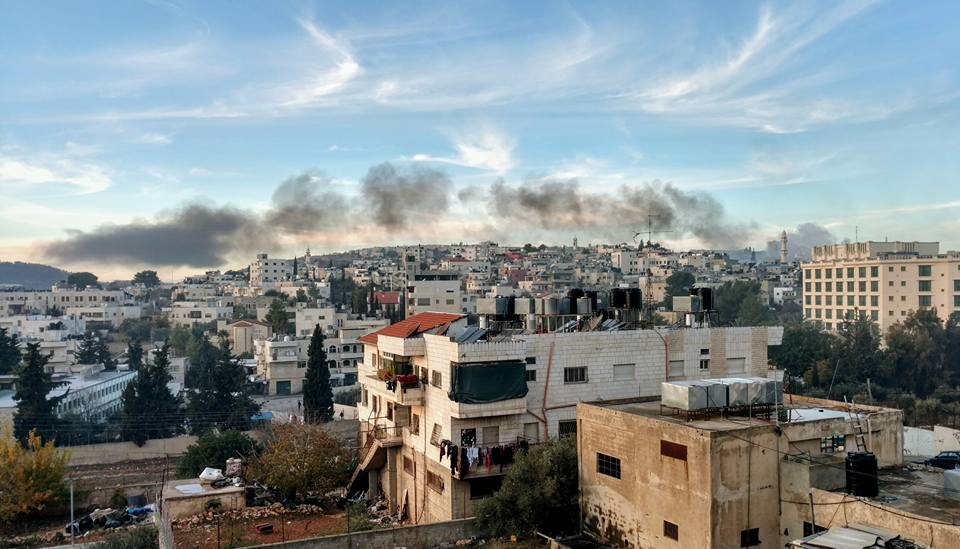
Returning to Bethlehem

Returning to Bethlehem
By Selah Ballard-One of our volunteers
If I’ve learned one thing living in Bethlehem, it is that someday the streets I walk down will be unearthed by archeologists. We are all walking in between layers of time, over the stories of those who’ve gone before us and beneath the stories of who will follow. In this land, I can already feel the weight of the histories to come hovering lightly above me. Stories are easily lost. This awareness makes me long to learn the stories of today and pass them along as I am able.
To excavate the recent history of this land requires patience, imagination, a penchant for wandering in libraries and bookstores and a listening ear–perhaps to the old lady sitting next to you on the bus or the man who sells coffee in the street.
It seems that everyone who lives in Palestine and Israel, whether Muslim, Christian, or Jewish has an interesting or heart-rending story to tell of depopulated villages, or the old way to prepare date jam, a murdered family member, living under curfew, a song that a shepherd used to sing to his sheep, a demolished home, what Gaza looked like when she was a child, why his family made Aliyah, how she got into reconciliation and peacemaking.
I arrived here for the first time in the fall of 2015 because I was desperate to understand the stories of this land; garbled and contradictory as they were on the other side of the ocean. I suspect that I carried a subconscious awareness of my need to make sense of what is happening here, and in so doing perhaps I would make greater sense of my own faith.
I remember well my second day at BethBC. One moment I was taking a photo of my feet on the gorgeous tiled floor of my office and the next I was nervously peering out the window at the large group of kuffiyeh-wrapped young men chanting as they walked down the street towards the Separation Wall. Some had stones in their hands. A moment later the sound of their chants was drowned out by the explosive sound of something… I cautiously crept outside with some of my co-workers but we quickly retreated indoors. So that’s what tear gas smells –and feels—like!
“Welcome to Palestine” said my co-workers wryly as they quickly shut the windows.
I quickly became accustomed to tear gas and skunk water –crowd dispersal methods used by the IDF against demonstrators—and learned to not go anywhere without a scarf around my neck or in my bag. After a few months of what became daily demonstrations in front of the college, I was explaining it to other visitors in the cool manner of one who’d been around such things my entire life. “That’s a rubber bullet–and that’s a tear gas canister,” I’d say with all seasoned experience of an old-timer as I led newbies through the Bethlehem streets.
But under my bravado, my heart was drying up. I never feared for my physical safety here. But cynicism, anger, confusion and depression were growing. And I could see the same struggle in my co-workers; the ones who had lived their entire lives in this desperately beautiful and violent setting.
The winter of 2015/16 was a relentless flow of blood. If the Holy Land were a woman, she would have been lying in a hospital bed as doctors desperately tried to wrap her wounds and supplement her with coagulants. Nevertheless, the blood did not stop flowing. Every other day was more bad news of someone getting killed or injured. And much of it was documented on shaky phone videos.
If you wonder how Bethlehemites managed to study theology and Christian ministry with the sounds of war and ambulances ringing outside the windows, you’d be correct in surmising that it was not easy, especially when the fresh experiences were piled on top of older traumas which go back for generations. But the people who live under Occupation somehow manage to keep going in circumstances that would make others wilt, flee, lose faith, or adopt a fly-away theology. (Not that they don’t do those things here too – they do.)
When I left, I never felt so happy to say goodbye to any place. The higher the plane ascended above Tel Aviv, the lighter I felt. And it would be over a year before I would return. But to say that hated it here would be an untruth. I loved it here, deeply. My honest struggle was how to process the painful and disorienting emotions that I had experienced over the previous year.
So, what brought me back?
I suppose it is those interconnected-issues of theology, eschatology and human rights–of working out the practicalities of our Christian faith in an area where every conclusion is challenged by facts on the ground that not only brought me here once, but also brought me back a second time. And did I mention the people? The living stones who keep the dead stones clean for the tourists and pilgrims who come and go. The living stones who cry out in worship, who weep salty tears, who have been raised as sons of Abraham and Christ. These are the “most holy places” and they move the depths of my heart.
Our dear Bethlehem’s story is not finished and though she still speaks with passion and eloquence, too few have listened. We love Bethlehem for her old stories and not her new ones. Her new stories raise too many questions. They make us uncomfortable. Her old stories are beautiful, but they eventually become meaningless if we are not willing to listen to today’s stories as well…Not the stories we want to hear, not the stories imposed upon her by the ignorant and insincere, but the stories that Bethlehem herself is actually telling.
For God is not the God of the dead but of the living, and it always the living that He is concerned with.
And so I returned to Bethlehem not only because of the unique beauty and tragedy of this place, but because I’ve become convinced that at least part of my calling is to listen to her stories and share them as I can.




